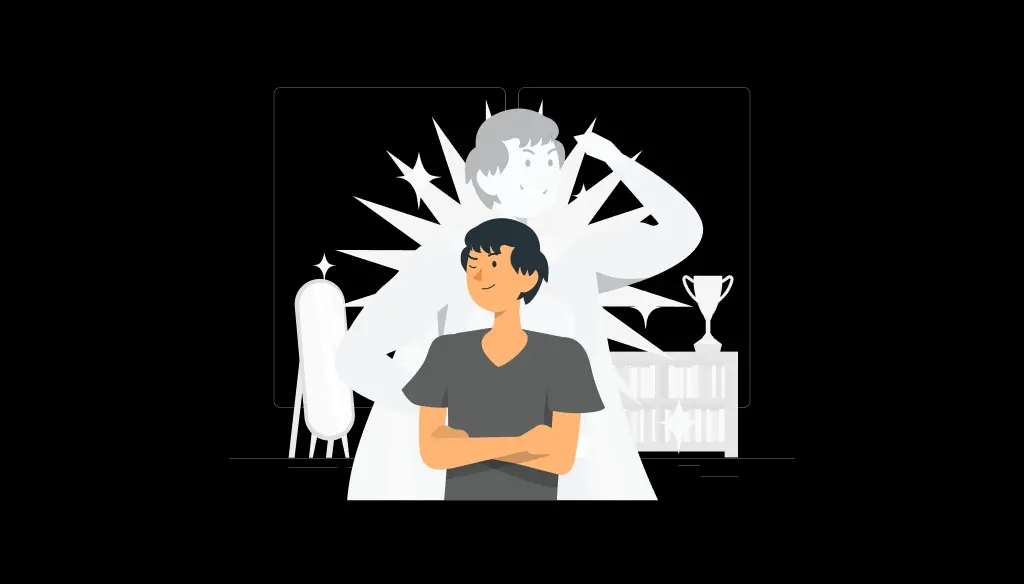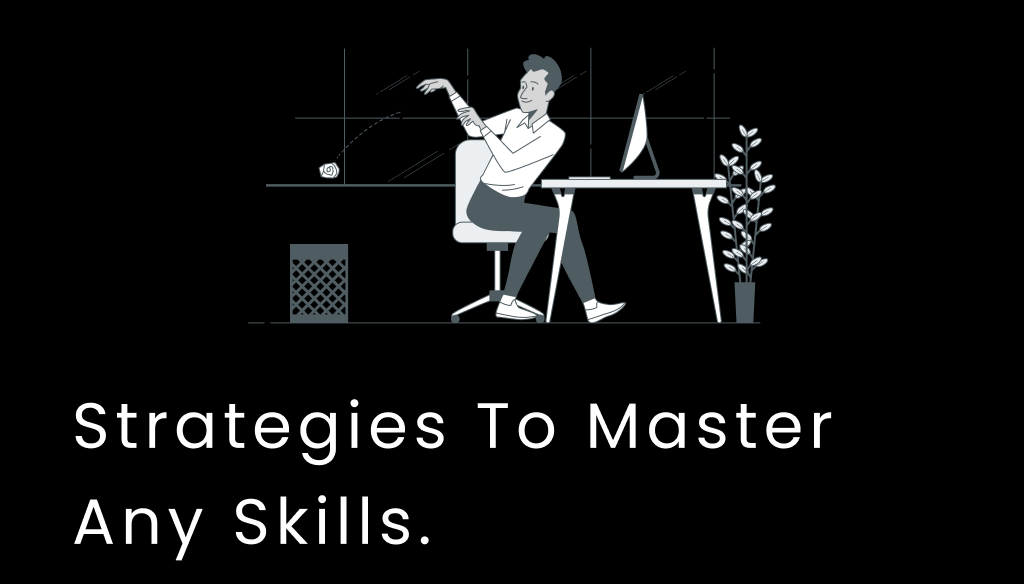Quantum Computing 101
Quantum computing is a new approach to computing that utilizes the principle of quantum physics, they are fast and powerful computers.
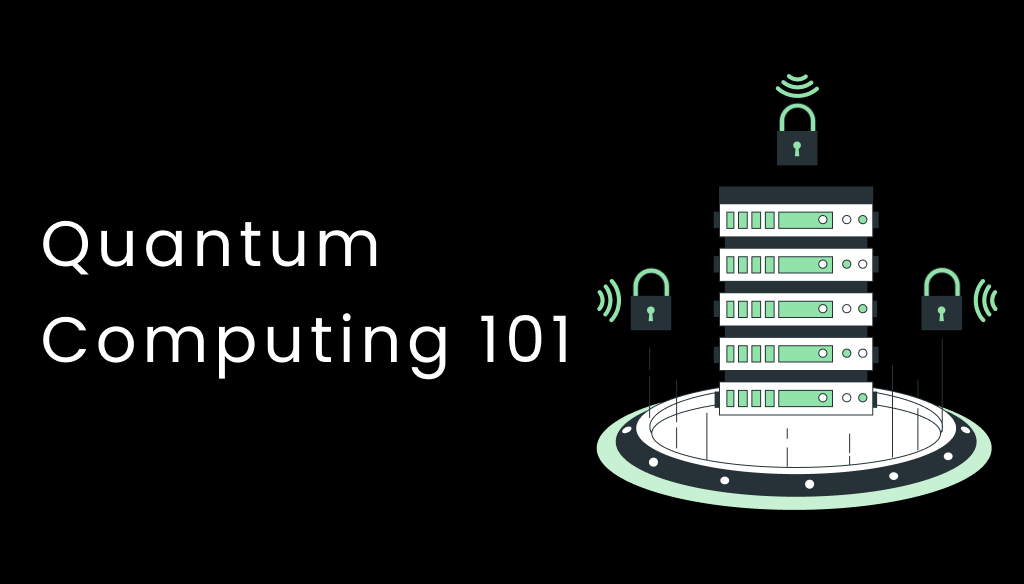
In this article, we will look into everything you need to know about quantum computing. We will see what is quantum computing, how it works, how is it made, and lots of other questions. So What is a quantum computer?
Quantum computers are like the computers that we use today. But it has huge computing power compared to modern computers. It uses quantum physics to store and manipulate data. It needs to be as far as possible from the environment, in other words, it needs to be isolated.
Before starting on quantum computers first, let's understand what quantum means. Quantum is the smallest physical entity that we can think and study about. Quantum physics deals with the properties and behaviors of the smallest entity. Quantum computer utilizes the smallest entities like electrons, and protons, to perform calculations.
Unlike the computers that we use today, it uses qubits to perform calculations. Classical Computers (computers that we use today) perform calculations based on bits. Bits are nothing more than sort of switches, 0 represents off state and 1 represents on state. At one time bits can have only one state; that means they can only have either on-state or off-state.
Now how does qbits work? Qbits are also like bits they also represent 1 or 0 but the twist here is that it can have infinite states one at a time. That means a quantum computer's qubit can be in a state between 0 and 1 also which makes it so powerful. This all became possible due to the principle of quantum mechanics.
Let's have some basic understanding of the principle of quantum mechanics used. Quantum Physics is the core idea that makes it possible for quantum computers to exist. The classical computer works on classical physics, like electric signals, and waves. Principles like Quantum Superposition, Quantum Tunneling, Quantum Interference, Quantum Entanglement, etc are the most basic principles that are behind the development of quantum computers.
Quantum Superposition is the ability of a quantum system to exist in many states at the same time until it is measured. This means one object can be in two states at one time while remaining a single object. A perfect example would be when you flip a coin and don't see the result then there is a 100% chance of getting head or tails. This head or tail result does not exist until you see it. This is the concept of quantum superposition.
Quantum Tunneling is the ability of a quantum system to avoid a barrier and move to the other side. according to classical physics, this would be impossible.
Quantum Interference In a superposition state it is a wavelike interaction between the subatomic particles. There are two kinds of quantum interference, constructive and destructive quantum interference. Constructive interference increases the probability of certain outcomes, and destructive quantum interference decreases the probability.
Quantum Entanglement Quantum Entanglement is a special kind of superposition. When two or more quantum entities are linked together, then the measurement of one object can explain the measurement of another one. This entanglement phenomenon made it possible for quantum computers to have parallel processing.
Historical Overview
This idea of working with quantum systems began in the early 20th century. Scientists were fascinated by this new field. There was like a race to develop new theories among physicists that could define the quantum system. Thus creating a foundation for quantum computers.
In 1900 a German Scientist Max Plank published a paper on the effect of radiation on black substance. Plank assumed that energy consists of separate units rather than continuous electromagnetic waves. Thus starting a new direction in physics. Later both Albert Einstein and Max Plank proved that light and matter behave both as particles and waves.
This was the seed for further study in the quantum field. In 1925, other German Physicists Werner Heisenberg, Max Born, and Pascual Jordan developed matrix mechanics. The Austrian physicist Erwin Schrodinger invented wave mechanics and the non-relativistic Schrodinger equation. This was the beginning of modern quantum physics or mechanics.
Lots of modern devices such as Lasers, Electron microscopes, and Magnetic resonance imaging(MRI) devices, etc. use quantum physics principles. So how did quantum computing start?
The idea of computing with quantum systems started with the famous physicist Richard Feynman giving a seminal lecture at the first conference on the physics of computation. This led to the development of various quantum algorithms. What is a quantum algorithm? It is a step-by-step process to solve problems by utilizing quantum principles.
In 1998, Isaac Chuang, Neil Gershenfeld, and Mark Kubinec built the first quantum computer. It was the 2-qubit computer that demonstrated the feasibility of the technology. Since 2000 there began a race to build a quantum computer.
Companies like Google, and IBM started investing lots of money in this field and they have achieved remarkable results. IBM has the largest quantum computer named Condor with 1, 121 qubits. Lots of development is ongoing in this field and we expect to get lots of crazier things in coming years.
Quantum Bits (Qubits)
If you know about the digital computer, it stores information in 0's and 1's. Do you know what those 0's and 1's mean to the computer? They are mere electrical signals. 0 means there is no electrical signal or voltage, in other words, it is in the off state. 1 means there is electricity, the system is in one state. Information that gets stored is all form of 0's and 1's.
The video you see on YouTube, the game you play, or this article you are reading is a bunch of 0's and 1's. Like bits in digital computers, Qubits also store information in 0's and 1's. Yes, it stores in 0's and 1's but the twist here is that it can have both 0 and 1 at the same time.
Qubits represent the spin of an electron and it can have multiple states at the same time. You need to understand quantum superposition and quantum entanglement to understand this. I have already explained about quantum superposition and entanglement.
let me again explain with you another example. Schrodinger's Cat Experiment is a thought experiment, it says that if you seal a cat inside a box with something it will eventually kill it. You won't know if the cat is alive or dead until you open the box. So, until you open the box and observe the cat, the cat is simultaneously dead and alive.
Like this thought experiment, you won't know the state of Qubits until you measure it. After measuring the state you will have zero chance of getting the opposite state. That means, if you measure the state of Qubit and you get 1 then you will have zero probability of getting zero.
So how is it different from Bits? why Qbuits are so powerful than classical bits? Also, what are the disadvantages of qubits? 1 and 0 at a time represent bits but qubits can exist in many states due to a concept called superposition.
Qubits perform parallel computation. Parallel computation is the ability to perform multiple calculations at a time rather than one single calculation at a time. Qubits can store more information than bits. For every extra qubit you get you can store twice as many numbers.
A qubit can solve certain problems that are impossible for classical digital computers. for example, factoring the prime number. I think you got your questions answered.
Quantum Gates and Circuits
Before knowing the quantum gates and circuits, you need to understand digital gates and circuits. Digital here I mean classical computer gates. So how do you think calculation is performed inside a computer system? Calculation is achieved by manipulating bits and qubits. And that manipulation is only possible because of the logic gate.
Gates are the basic building block of any electric circuit. It contains logic and switches to carry out that logic. Gates is the implementation of logic in hardware. you cannot expect a computer to run without logic gates. Not just computers any electric device has logic gates and circuit systems. There are lots of logic gates some are AND, OR, XOR, and NOR, I only included these because these are the basic of all gates,
Quantum gates are just like digital gates but they act on qubits. They manipulate the qubit to perform the calculation. Keep in mind that there will be no calculation without manipulating these qubits. Also digital logic uses Boolean algebra while quantum gates use linear algebra. Boolean algebra deals with the truth table. Let's look into some basic quantum logic gates, I will not go into the math behind these gates. (|0>, or |1>, represents qubits)
- Hadamard Gate. This is the most popular quantum gate. you can find this gate almost anywhere in quantum computing. It is represented by H inside a box, So what does it do? It will generate an equal chance of getting both 0 and 1. For example, if you input 0 through this get, the probability of getting 0 and 1 is the same which is 50%. Note that it is a single qubit quantum logic gate,
- Controlled Gates - In this type of gate operation a state is conditioned on the data. There are lots of controlled gates. For example, a Controlled Not gate or CNOT: CNOT is a qubits quantum logic gate. It is also known as Feynman Gate or controlled Pauli-X. It performs on two qubits control qubit and target qubit. It flips the target qubit if the control qubit is in state |1>. If it is other then it will leave unchanged.
- The Pauli Gates is named after a guy with a cool name. Wolfgang Pauli, Paule gates are sets of three quantum logic gates that work on a single qubit. Pauli x, Pauli Y, and Pauli Z, each Pauli gate rotates around the different axis of the Bloch sphere by a certain radian. Bloch sphere is a representation of the quantum states on the 3d spherical surface.
Quantum Algorithms
An algorithm is a step-by-step instruction to do a task. For example to make rice
step1: start
step2: measure the rice
step3: clean the rice
step4: put it in the rice cooker
step5: turn on the rice cooker and wait
step6: stop
This is the basic algorithm to make rice, ( not a good rice maker). Like that, to solve the problem in the computer there has to be a step-by-step instruction given to the computer called an algorithm. so what is a quantum algorithm?
A Quantum algorithm is a step-by-step instruction given to a quantum computer. it utilizes the quantum mechanics principles. An algorithm follows the quantum algorithm principle to identify as a quantum algorithm.
All algorithms can work on the quantum computers. However quantum algorithms do not work on classical computers. Because that implements the quantum principle which is absent on a normal computer. Here are some popular quantum algorithms. I will not go deep into the algorithm itself, I will provide a short intro to the algorithm.
- Shor's Algorithm Shor's algorithm is a quantum algorithm that finds the prime factors of an integer, it was developed by Peter Shor in 1994. It uses certain principles of quantum mechanics to factorize large numbers. This algorithm showed the potential power a quantum computer holds. This algorithm can break modern cryptographic algorithms. Why this algorithm is so popular? Because it finds prime factors exponentially faster than known classical algorithms.


Grover's Algorithm Lov Grover in 1996 invented Grover's Algorithm. Grover's algorithm is a quantum search algorithm. It leverages the quantum mechanics principle to quickly search unsorted or unstructured databases. Unsorted databases require linear search and the classical algorithm takes about O(N) time. But Grover's algorithm only takes about O(N^1/2) time and takes much less storage space. In simple terms, it is extremely fast compared to classical search algorithms.
There are lots of other quantum algorithms specializing in various tasks. It is always in the developing phase. One thing to keep in mind is that all unsolvable problems by classical algorithms can also be not solved by a quantum algorithm. The cool thing about quantum algorithms is that they can perform calculations at a fast speed.
Quantum Hardware
There are lots of proposed computing hardware systems for quantum computers. some being required to have a temperature below the space. These quantum hardware are very hard to develop and maintain but the computing power it holds is a lot.
But we are still in the phase of research so at present, the cost to have a quantum computer is like to have a computer in the 1950s. Let's sit back and think about what is quantum processors. Quantum processors are the hardware systems that can run quantum algorithms on it. It follows the quantum principle.
Quantum computers have both classical and quantum parts. Quantum computer requires thousands of complex components. To handle such large machines classical computers are an integral part of it. Let's have a short overview of the architecture of a quantum computer.

Quantum computers consist of 5 basic layers. Application Layer, Classical Layer, Digital Layer, Analog Layer, and Quantum Layer.
The application Layer acts as a user interface between the quantum device and the user. It is not dependent on hardware, it is used to plan different quantum algorithms.
The classical Layer optimizes quantum algorithm into microinstruction. The Digital Layer takes those microinstruction and changes into signal needed by quantum logic gates.
The Analog Layer creates a voltage signal so that a qubit can be executed. Quantum Layer holds the quantum chip, actual qubits. This layer minimizes error and determines the performance of a quantum computer. Let's look into popular technologies that are used for developing the actual quantum processor.
1. Nuclear Magnetic Resonance
This quantum computing is an approach to computing that utilizes spin states of molecules as qubits. One main challenge of this type of computing is it deals with decoherence as more qubits are introduced and also large sample size is required.

2. Trapped Ion
like the name says trapped Ion works by trapping an ion with the help of an electric field in a precise location. And manipulating those trapped charged particle computation is achieved. manipulating those ions with the electric field and laser. Each ion’s stable electronic states represent qubits. Which can exist in superposition and entanglement, fundamental properties of quantum computing. Scalability is a major issue here as adding more qubits introduces complexities.
3. Super-Conducting Chip
Certain materials when cooled down to absolute zero exhibit zero electrical resistivity. And the absence of a magnetic effect. This property of material is superconductivity. Super-conducting chips work by utilizing this phenomenon to manipulate qubits. The major challenge of this type of approach is to maintain a long coherence time. As we perform measurement qubits tend to lose their quantum property.

4. Neutral Atom
A neutral Atom is a kind of atom in which electron's and protons' charge balance. This computer uses neutral atoms as quantum qubits. These qubits can be controlled with the help of optical tweezers(focused laser beams that trap and hold atoms in a place without needing a charge).
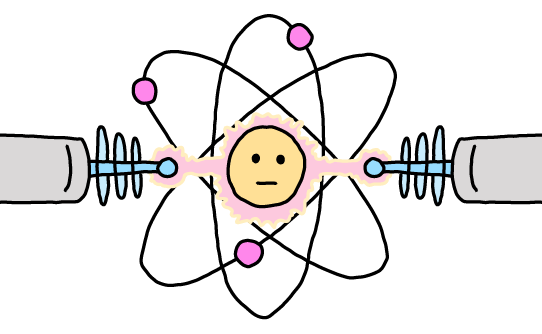
5. Photonics
Photonics quantum computer uses photons ( particles of light) to manipulate the qubits. Offering resilience against decoherence. Decoherence is the loss of quantum properties of qubits while interacting with the environment.
Despite having immense computing speed quantum computers come with some defects in them. It is due to the instability of quantum entities that are being used in computation.
Quantum Software and Programming
Now you have your curiosity up and you might want to ask which programming language or software does quantum computer use. Let me tell you which programming language it uses. I have included major tools used by the top players in this quantum computing game.
- Qiskit - Qiskit is an open-source tool to work with quantum computers at the level of pulses, circuits, and algorithms. It is developed by IBM. Users can use this tool to create and use quantum programs in quantum hardware or simulators. This tool is written in Python. Making it easier and more accessible for researchers and students.
https://www.ibm.com/quantum/qiskit
- Cirq - Another open-source tool for writing quantum programs is Cirq. It is developed and maintained by Google. It is designed to help users run quantum programs and quantum circuits on quantum hardware. It is a Python software library for writing quantum programs.
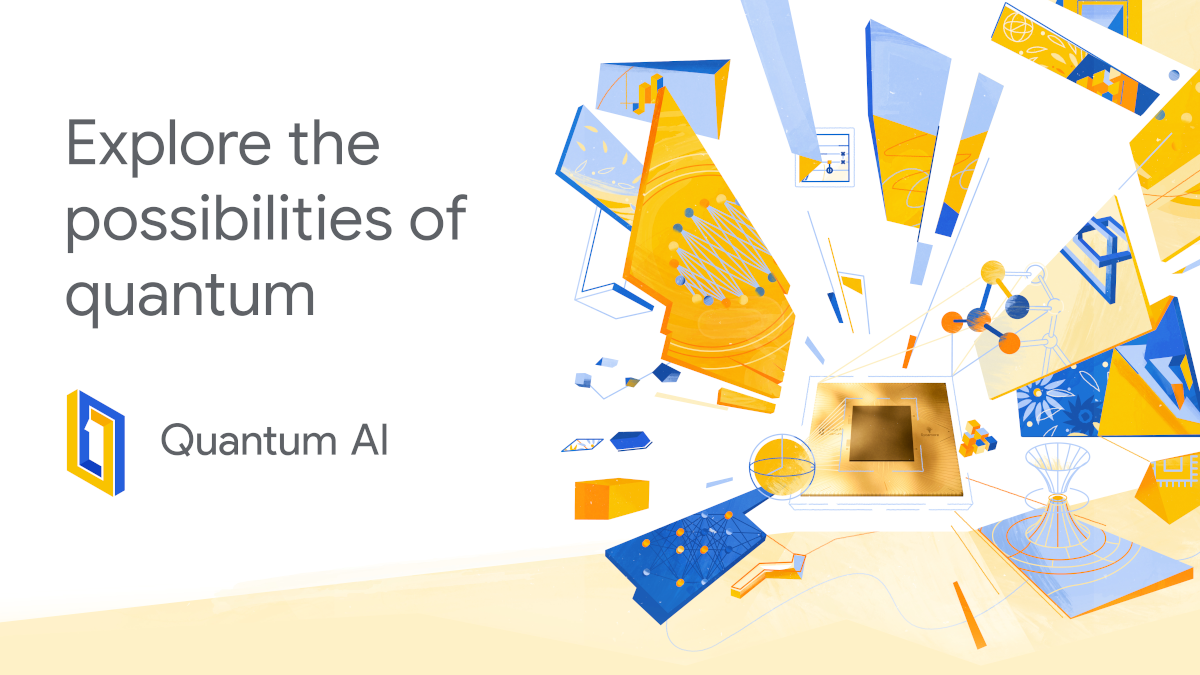
Quantum Applications
If you somehow got a chance to use a quantum computer like we use a mobile phone laptop, would you use it? Quantum computers have the potential to revolutionize the industries that we never thought of. Here are some of the applications of quantum computers. Material Science
Quantum computers can simulate the quantum properties of matter. Helping in the discovery of completely new matters and drugs.
You might have heard in the news or social media about the discovery of new material thanks to quantum computers.
Finance
It helps in efficient financial modeling, market prediction, and risk management.
Machine Learning
Quantum computer is best suited for this kind of task, working with huge amounts of data. It can speed up data pattern recognition better and fast.
Simulation
Some things in this universe are hard to visualize with the help of traditional computers or through our minds such as higher-dimension mathematical entities. Quantum computers can help in the simulation of quantum property of matter and higher-dimension mathematics. Not only quantum properties and higher dimensions, but it can also help us understand our nature better, and predict weather.
Task Optimization
Problems like Traveling Salesman Problems and Portfolio Optimization can be solved with the help of quantum computers. which is beneficial to logistics and supply chain management.
Cryptography and Cyber Security
I will be direct with you, quantum computers can break all the major cryptographic algorithms. So it also means that we can help secure our cryptographic algorithm with the help of quantum cryptography.
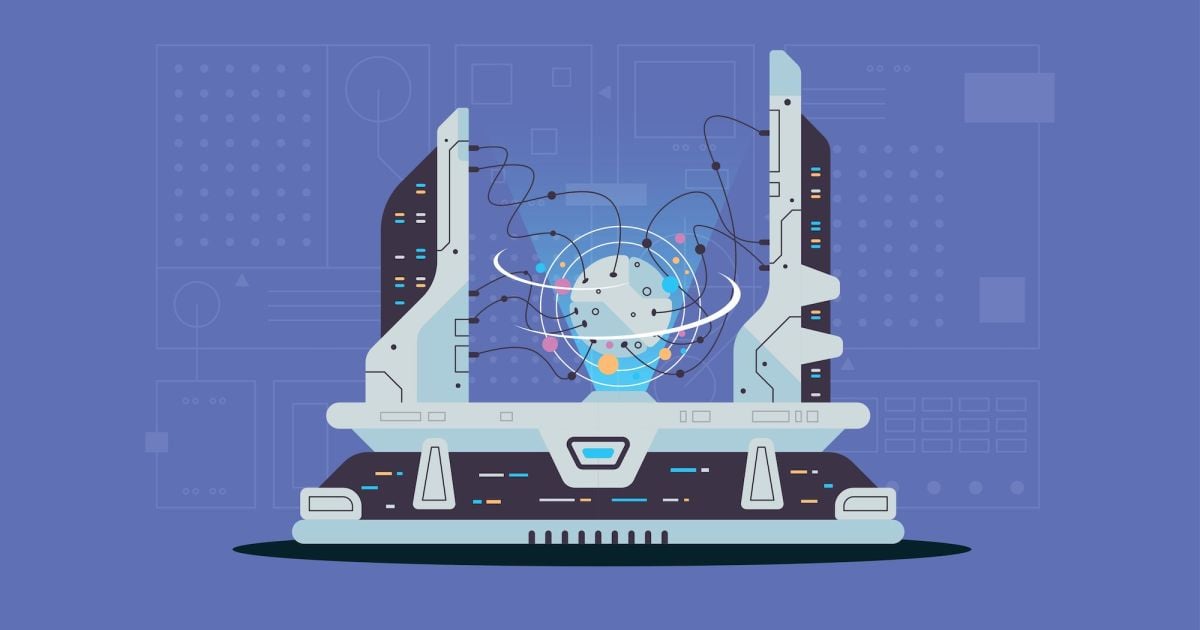

Challenges and Limitations
Quantum computing is one of the groundbreaking technologies we humans have developed. which promises to solve our data processing and storage problem. But it also has significant problems and challenges on its own. let's look into the challenges and limitations of quantum computers.
Error Correction:
Decoherence is the loss of quantum property while measuring the state of qubits. Qubits, the fundamental units of quantum computation, are sensitive to their environment. This decoherence is the most challenging problem for quantum computers. Even minor disturbances can cause them to lose their quantum properties, leading to errors. Developing robust error correction techniques is essential for practical quantum computers.
Scalability:
Compared to the classical computer quantum computer demonstrates impressive performance for specific tasks such as pattern recognition. Yet, they remain small. Scaling up quantum computers to hundreds or thousands of qubits while maintaining high coherence and low error rates remains a major challenge.
Hardware Development: Designing and building reliable quantum hardware is difficult. Researchers struggle with issues related to qubit connectivity, noise levels, and error correction.
Software Development: Quantum algorithms are more complex than classical ones. Developers must think outside of the box to harness the power of quantum computing.
Classical Computer Interfaces: Bridging the gap between classical and quantum computing is essential. Creating efficient interfaces that allow seamless communication between quantum and classical systems is an ongoing challenge.
Standards and Protocols: Establishing industry standards and protocols for quantum computing is crucial. This will help collaboration, interoperability, and widespread adoption.
Trained Talent: Building a skilled workforce proficient in quantum computing is essential. Training scientists, engineers, and developers to work with quantum systems is a priority.
Expense: Quantum computing research and development need a large investment. Balancing cost-effectiveness with technological advancements remains a challenge.
Despite these hurdles, the progress made in quantum computing over the last few years has been remarkable. As researchers continue their ascent toward scalable, general quantum computing. we expect exciting breakthroughs that will transform various fields, from medicine to materials science.
Future of Quantum Computing
In the realm of quantum computing, the future holds both promise and intrigue. Let’s delve into what lies ahead:
Modular Quantum Computing:
The focus is shifting from setting qubit records to practical hardware and long-term goals. Researchers are working on getting quantum chips to communicate with each other. IBM, for instance, introduced its Heron processor in 2023, which has 133 high-quality qubits. Each Heron chip will be able to connect to other Heron processors. Paving the way for modular quantum computers built from many interconnected processors. This shift is expected to enhance scalability.
General-Purpose Quantum Computers:
Thanks to recent breakthroughs, aggressive road mapping, and large funding. we might witness general-purpose quantum computers earlier than anticipated. These powerful machines could revolutionize fields like mathematics, science, and optimization problems.
Market Availability:
Quantum computers are projected to be available in the market by 2030. Yet, further refinements in hardware and software will be necessary before businesses can use them for various applications. Once operational, quantum computers have the potential to transform day-to-day applications.
Quantum Advantage:
While a quantum computer functioning at scale may not be viable before 2040, investors remain committed for the long haul. Industry observers look beyond traditional indicators to gauge meaningful progress, recognizing that quantum computing’s trajectory is a long-term try.
Applications:
Quantum computing’s known and probable applications span diverse domains. Including cybersecurity, bio-engineering, AI, finance, and complex manufacturing. As the technology matures, its impact will extend far beyond theoretical discussions.
In this quantum landscape, the journey is as fascinating as the destination.
Ethical and Societal Implications
The emergence of quantum computing brings forth a host of ethical and societal implications. Let’s delve into some of the key aspects:
Malicious Use:
Quantum computers have the potential to break classical encryption methods. People with wrong intentions can jeopardize data security and privacy. Ensuring responsible use and preventing malicious actors from exploiting quantum capabilities is crucial.
Disruption of Industries:
Quantum computing could revolutionize fields like cryptography, optimization, and simulation. Existing industries may face disruption as quantum algorithms outperform classical counterparts.
Environmental Impact:
Quantum computers need low temperatures for operation, consuming significant energy. Balancing technological advancements with environmental sustainability is essential.
Fairness and Equity:
Access to quantum technology must be fair. But if you developed a powerful quantum computer would you give other people to use it? Disparities based on economic or social factors are sure to increase. Ethical governance should guide quantum development to benefit all segments of society.
Quantum computing brings new ethical challenges. We cannot be sure of our traditional method of ethical concern works in the era of quantum computers. That demands new tools and methods to tackle.
As we navigate this path, thoughtful consideration of these implications will shape its responsible integration into our world.
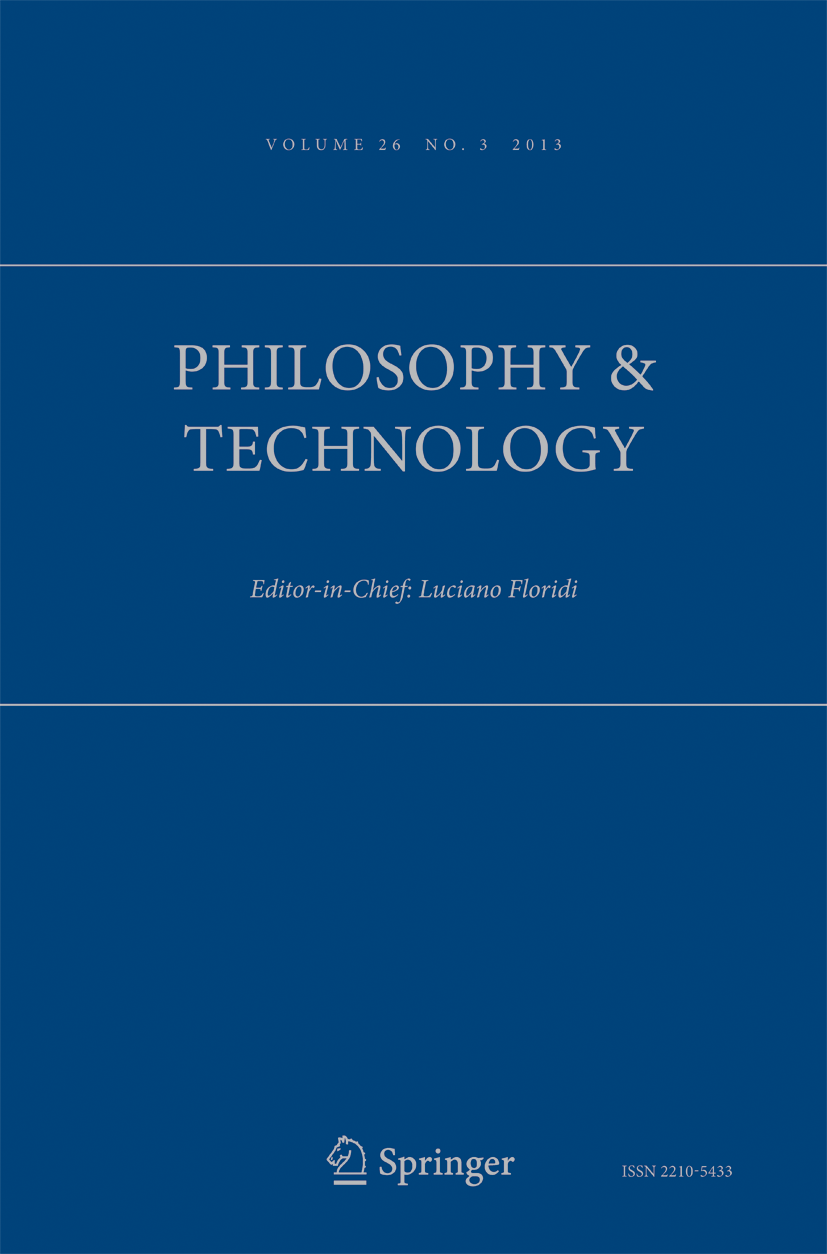
Conclusion
Here are the Key points that we discussed above.
What is Quantum Computing?
- Uses quantum mechanics to store and manipulate data.
- Offers significant computational power compared to classical computers.
- Requires special conditions to operate (isolated from the environment).
How Does it Work?
- Qubits (quantum bits) are the basic unit of information, able to be 0, 1, or both at the same time (superposition).
- This allows parallel processing for complex calculations.
- Quantum mechanics principles like entanglement further enhance processing power.
Historical Overview
- The foundation for quantum mechanics was laid in the early 20th century.
- The idea of quantum computing emerged in the 1980s with Richard Feynman's work.
- The first quantum computer with two qubits was built in 1998.
- Companies like IBM and Google invested in developing larger and more powerful machines.
Quantum Bits (Qubits) vs. Classical Bits
- Qubits can exist in many states, unlike classical bits (0 or 1).
- This enables quantum computers to perform calculations much faster for specific problems.
Quantum Gates and Circuits
- Like classical gates, quantum gates manipulate qubits to perform calculations.
- Quantum gates use linear algebra instead of Boolean algebra.
- Hadamard gate, Controlled NOT gate, and Pauli gates are some basic examples.
Quantum Algorithms
- Special instructions designed to leverage the power of quantum mechanics.
- Shor's algorithm (factoring large numbers) and Grover's algorithm (searching databases) are prominent examples.
Quantum Hardware
- Building and maintaining quantum hardware is challenging due to qubit instability.
- Several technologies are being explored, including trapped ions, superconducting chips, and neutral atoms.
Quantum Software and Programming
- Qiskit (IBM) and Cirq (Google) are popular open-source tools for developing quantum programs.
Quantum Applications
- Quantum computers hold promise in various fields like:
- Material science (drug discovery)
- Finance (modeling, risk management)
- Machine learning (data pattern recognition)
- Simulation (complex systems, higher dimensions)
- Task optimization (logistics, supply chain)
- Cryptography (both breaking and securing existing methods)
Challenges and Limitations
- Qubit decoherence (loss of quantum properties) is a major hurdle.
- Scaling up the number of qubits while maintaining coherence is difficult.
- Hardware development, software development, and user training need significant effort.
- The high cost of research and development is another challenge.
Future of Quantum Computing
- Modular quantum computing with interconnected processors is on the horizon.
- General-purpose quantum computers could revolutionize various fields.
- Market availability is projected by 2030, with wider adoption following further advancements.
- Quantum advantage (solving problems impossible for classical computers) might be achievable by 2040.
Quantum computing is an evolving field with immense potential to impact various aspects of our lives. While significant challenges remain, the future holds exciting possibilities for this groundbreaking technology.
Be Bold and Confident Today: Follow These Easy Steps
Confidence is the ability to act in a way that reflects your own beliefs and opinions, even in the face of opposition or doubt. Having confidence means being able to do what you want when you want, and not letting other people’s opinions get in the way. Building your...
Dominate Your Day: The Morning Routine for Maximum Productivity
The most important habit you can develop in the morning is having a morning routine, which is a way of making your day as productive and creative as possible. Your morning routine is what decides your day. Morning is like saplings - if it is weak and unhealthy, it produces...








